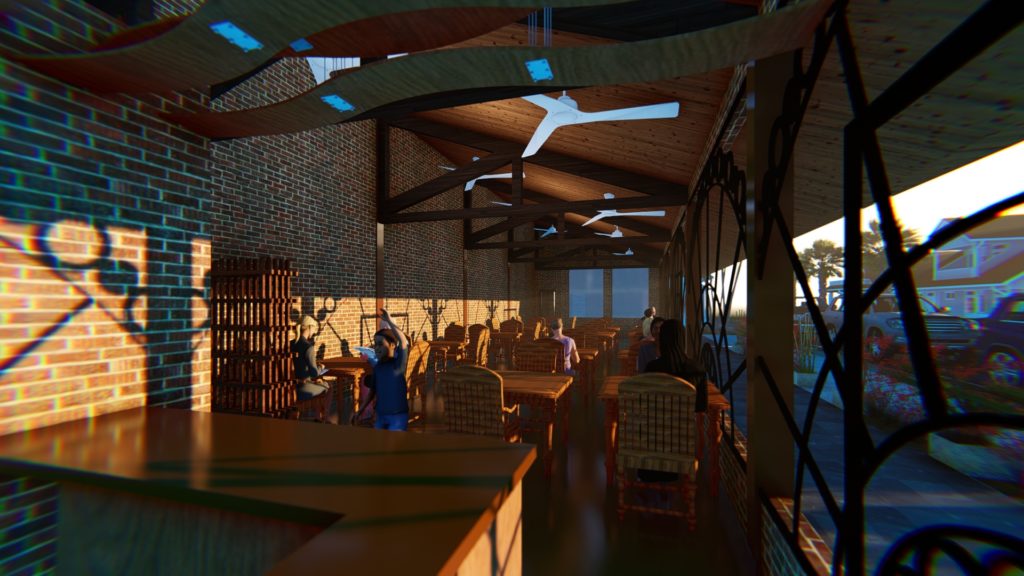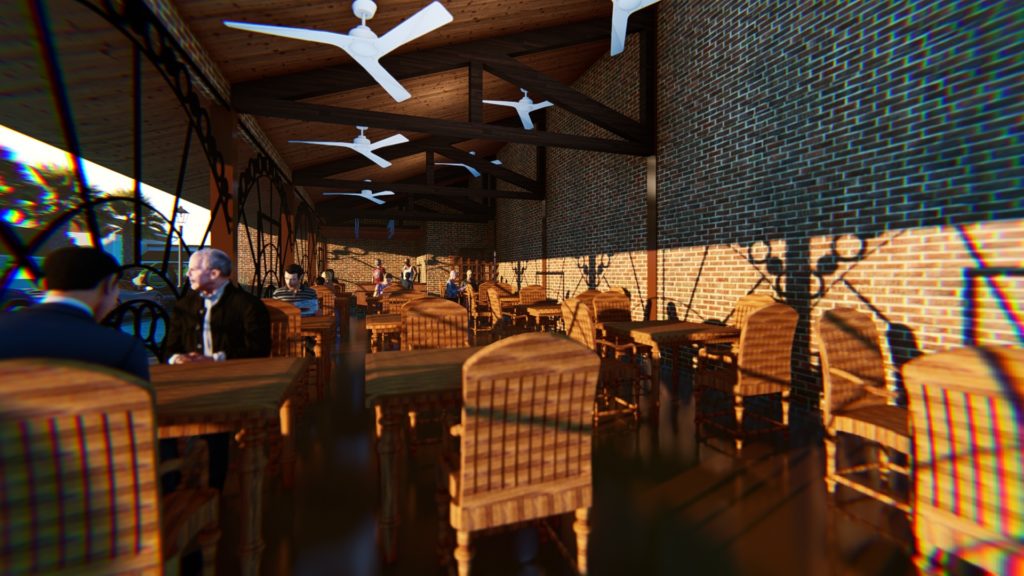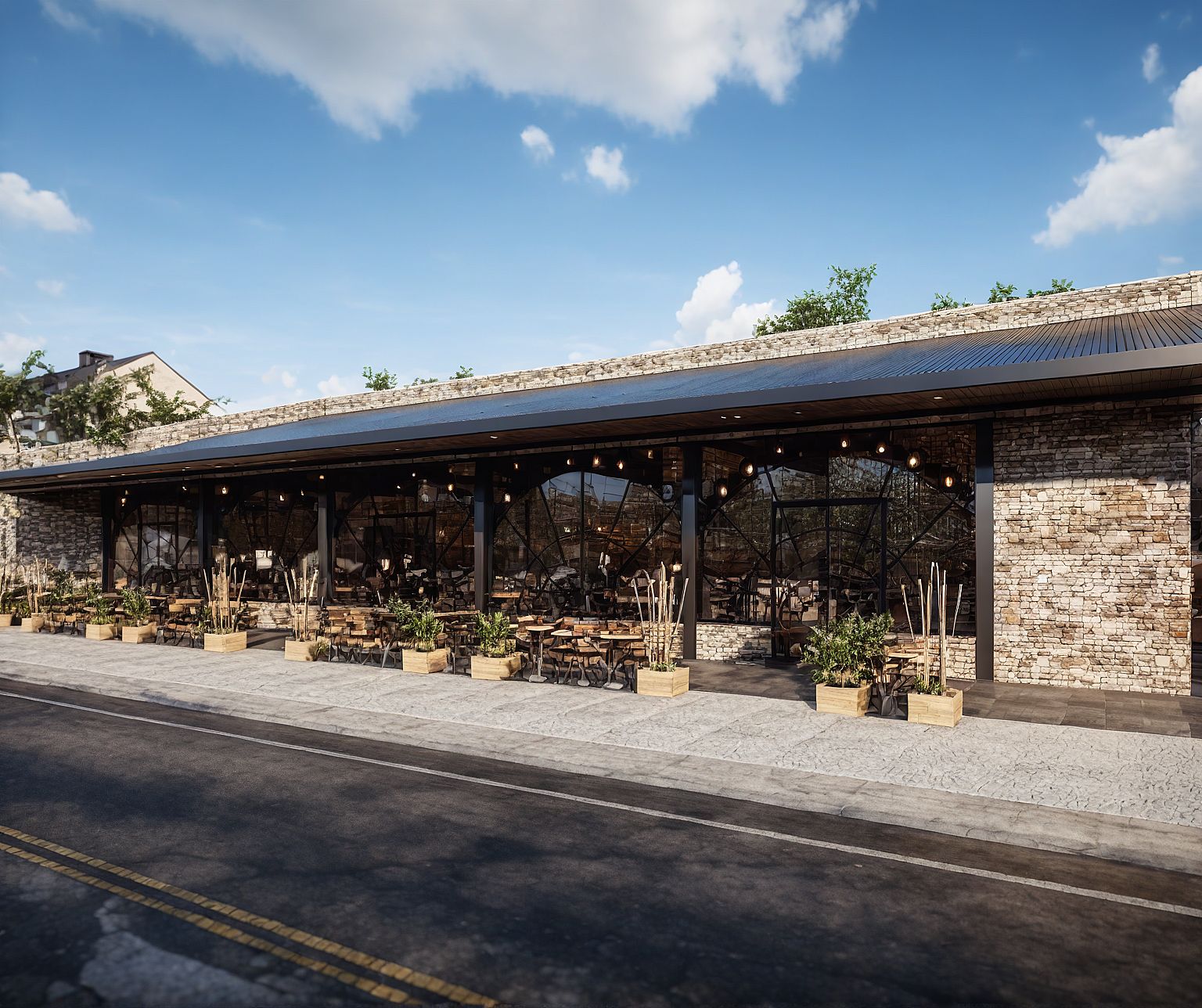Nestled in the heart of Bukidnon, a province known for its rich culture, vibrant landscapes, and indigenous tribes, stands a restaurant that is much more than just a place to eat. This unique dining experience draws deep inspiration from the local Bukidnon tribes, blending tradition with contemporary design and cuisine. With its grill work inspired by the intricate Kaamulan headdress of the Bukidnon tribes and the use of brick work to help combat siltation in the nearby Pulangi River, this restaurant carries forward the values of Coffee for Peace—community, sustainability, and cultural preservation.
Honoring the Bukidnon Tribes: The Kaamulan Headdress
When stepping into the restaurant, visitors are immediately struck by the stunning details that pay homage to Bukidnon’s indigenous tribes. The design elements are carefully curated to celebrate the region’s rich cultural heritage, particularly the Kaamulan headdress, a symbol of pride and identity among the Bukidnon people. The Kaamulan Festival, one of the most anticipated cultural events in the province, is an annual celebration of the indigenous tribes in Bukidnon, and it plays a significant role in the lives of the local communities.
The restaurant’s grill work, which is a centerpiece of its design, is inspired by the beautiful and intricate patterns of the Kaamulan headdress. The headdress itself is a symbol of strength, unity, and tradition, worn by the tribal leaders and warriors during important ceremonies and events. The grillwork, with its geometric patterns and symbolic motifs, not only adds an authentic and visually striking element to the restaurant’s architecture, but it also serves as a daily reminder of the rich cultural tapestry that defines Bukidnon.
Through this thoughtful integration of the Kaamulan headdress, the restaurant connects diners with the cultural significance of the Bukidnon tribes. It brings the stories of the indigenous people to life in a way that respects their traditions while sharing them with a broader audience. Each time a guest looks at the grill work, they are reminded of the deep-rooted history and vibrant customs that have shaped the Bukidnon people.
A Sustainable Approach: Protecting the Pulangi River
Beyond its cultural inspirations, the restaurant also reflects a commitment to sustainability and environmental protection, core values that align closely with the mission of Coffee for Peace. The nearby Pulangi River, which flows through Bukidnon, is an essential waterway that sustains the local communities and provides livelihoods for many. However, like many rivers, it faces the challenge of siltation—where excess soil and sediments accumulate, affecting water quality and aquatic life.
To address this issue, the restaurant’s brick work serves a dual purpose: it not only adds to the aesthetic charm of the space but also helps in combating the effects of siltation. The use of brick materials in construction, particularly around the riverbanks, acts as a stabilizing agent for the soil, preventing the erosion of land and reducing the amount of sediment that makes its way into the Pulangi River. This eco-friendly approach underscores the restaurant’s dedication to sustainability and its desire to protect the local environment for future generations.
The decision to incorporate such environmentally conscious design elements is a direct reflection of the values promoted by Coffee for Peace, a movement that seeks to empower communities, promote peace, and protect the environment. Coffee for Peace has long championed initiatives that focus on environmental preservation, fair trade, and community development, and this restaurant carries those ideals forward by intertwining sustainability with cultural respect.

Celebrating Local Cuisine and Community
While the architectural and environmental aspects of the restaurant are deeply meaningful, the food itself is another vital part of the experience. Drawing inspiration from Bukidnon’s diverse culinary heritage, the restaurant offers a menu that showcases the region’s rich agricultural bounty. From the locally grown coffee beans that are the pride of Bukidnon to the variety of fruits and vegetables cultivated by local farmers, the dishes are crafted with an emphasis on fresh, sustainable ingredients.
The restaurant also serves as a community hub, fostering relationships between local farmers, artisans, and customers. It operates in line with Coffee for Peace’s broader mission of building stronger, more peaceful communities through sustainable practices and fair trade. By supporting local farmers and emphasizing the use of indigenous ingredients, the restaurant not only provides an authentic dining experience but also contributes to the economic growth of Bukidnon’s rural communities.
The ambiance of the restaurant is warm and welcoming, with a focus on creating a space where people can gather, share stories, and connect over good food. Whether it’s a local family, a group of tourists, or a community event, the restaurant serves as a gathering place for all—mirroring the values of unity and collaboration that Coffee for Peace promotes.
A Legacy of Peace, Sustainability, and Cultural Preservation
In every aspect, this restaurant embodies the core values of Coffee for Peace—promoting peace, sustainability, and cultural preservation. The fusion of the Kaamulan-inspired grill work, the sustainable brick construction to protect the Pulangi River, and the focus on local ingredients all reflect a commitment to both honoring Bukidnon’s rich heritage and ensuring a healthier future for the community.
By offering a dining experience that is rooted in the local culture and committed to environmental stewardship, the restaurant serves as a testament to the power of food, design, and community to create positive change. It continues to uphold the legacy of Coffee for Peace, reminding us all that when we come together to celebrate our traditions and take care of our environment, we can build a more harmonious and sustainable world.


